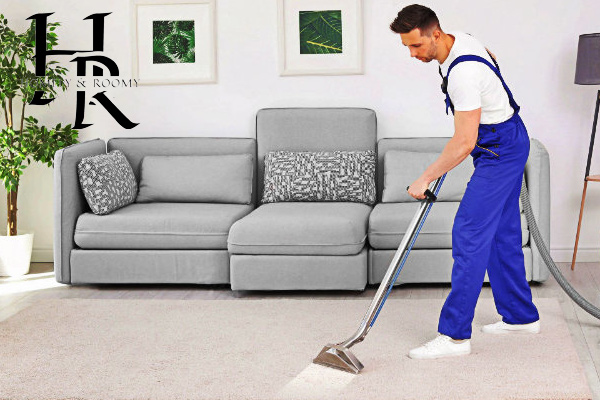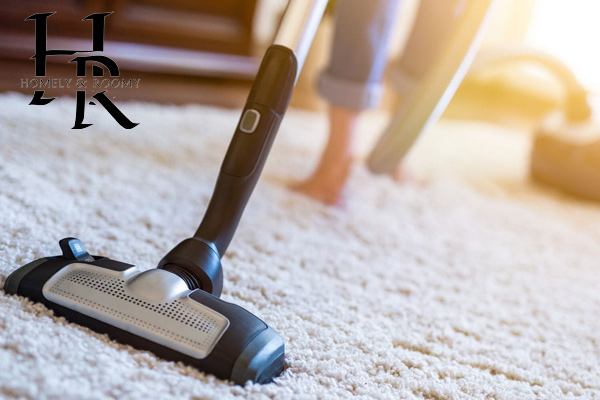Blog
Should You Vacuum After Carpet Cleaning
The question of whether you should vacuum after carpet cleaning is a common one among homeowners and renters alike. While professional carpet cleaning can rejuvenate your carpets, knowing the proper post-cleaning care is essential to maintain that fresh, clean look. This article will explore the benefits and timing of vacuuming after carpet cleaning, using the keyword “should you vacuum after carpet cleaning.” Read on for clear answers and practical advice to keep your carpets looking their best.

Key Takeaways by Should You Vacuum After Carpet Cleaning
- Enhanced Cleanliness: Vacuuming after carpet cleaning can remove any remaining dirt or debris, ensuring a thorough clean.
- Timing is Crucial: It’s important to wait until the carpet is completely dry before vacuuming to avoid damage.
- Professional Advice: Opinions on this topic can vary, so it’s wise to consult with your carpet cleaning service for personalized recommendations.
- Maintenance and Lifespan: Regular vacuuming and proper post-cleaning care can significantly extend the lifespan of your carpets.
Understanding Carpet Cleaning and Maintenance
Why Regular Carpet Cleaning is Essential
Maintaining clean carpets is vital for both aesthetic and health reasons. Carpets can trap dust, dirt, allergens, and bacteria, which can affect indoor air quality and contribute to respiratory issues and allergies. Regular cleaning helps to remove these contaminants, making your living environment healthier.
Professional carpet cleaning offers several benefits beyond what regular vacuuming can achieve. It penetrates deep into the carpet fibers to remove embedded dirt and stains, which enhances the carpet’s appearance and longevity. Regular professional cleaning can also help preserve the carpet’s warranty and improve its overall performance. By investing in routine carpet care, you ensure a cleaner, fresher home environment that contributes to the well-being of all occupants.
Common Carpet Cleaning Methods

Hot Water Extraction
Hot water extraction, commonly known as steam cleaning, involves spraying hot water and cleaning solution into the carpet fibers and then extracting the water along with dirt and debris. This method is highly effective at deep cleaning and removing stains, but it requires significant drying time, usually around 12 to 24 hours, depending on the carpet thickness and weather conditions.
Dry Carpet Cleaning
Dry carpet cleaning uses specialized machines and chemical cleaning agents that require minimal moisture. This method involves applying a dry cleaning compound to the carpet, which absorbs dirt and is then vacuumed up. Dry carpet cleaning is advantageous for its quick drying time, usually within 30 minutes to an hour, making it suitable for busy households and commercial settings.
Shampooing and Bonnet Cleaning
Shampooing involves applying a foamy detergent to the carpet and scrubbing it with a brush machine. Bonnet cleaning, on the other hand, uses a rotating absorbent pad soaked in cleaning solution to clean the surface of the carpet. Both methods can effectively remove surface dirt and stains, but they may not reach deep into the carpet fibers like steam cleaning. Drying times for these methods vary but generally take several hours.
Should You Vacuum After Carpet Cleaning?
Vacuuming after carpet cleaning offers several benefits. It helps remove any remaining dirt and debris that the cleaning process may have loosened but not fully extracted. This additional step ensures a more thorough clean, leaving your carpets looking and feeling fresh.
Vacuuming also aids in fluffing up the carpet fibers, which can become flattened during the cleaning process. This helps maintain the carpet’s texture and appearance. However, there are situations when vacuuming may not be necessary, such as if the cleaning method used already thoroughly extracted all dirt and debris, or if the carpet is still damp.
Timing for Vacuuming After Carpet Cleaning
The timing of vacuuming after carpet cleaning is crucial to avoid damage. Carpets should be allowed to dry completely before vacuuming. Vacuuming a damp carpet can cause the fibers to mat down and potentially damage the vacuum cleaner. The drying time depends on the cleaning method used and environmental factors such as humidity and ventilation.
For steam cleaning, a drying time of 12 to 24 hours is recommended. Dry carpet cleaning requires a much shorter drying period, usually within 30 minutes to an hour. Shampooing and bonnet cleaning typically need several hours to dry completely.
Signs that your carpet is ready for vacuuming include a dry, fluffy texture, and the absence of any damp or cool spots when touched. Ensuring the carpet is fully dry before vacuuming will help maintain its integrity and prolong its lifespan.
Practical Tips and Expert Opinions

How to Vacuum Carpets After Cleaning
Vacuuming carpets after cleaning is crucial to maintain their appearance and longevity. Here’s a step-by-step guide to ensure you do it right:
- Allow Carpet to Dry: Ensure your carpet is completely dry before vacuuming to avoid damaging the vacuum and the carpet fibers.
- Set the Right Height: Adjust your vacuum to the appropriate height for your carpet type. Too low can damage the fibers, too high won’t clean effectively.
- Vacuum in Multiple Directions: Start by vacuuming in one direction, then go over the area again from a different angle to ensure all dirt and debris are removed.
- Use Slow, Even Strokes: Avoid rushing. Slow, even strokes allow the vacuum to pick up more dirt.
- Empty the Vacuum Bag or Bin: A full vacuum bag or bin can reduce suction. Empty it frequently to maintain optimal performance.
Tips for Using the Right Vacuum Settings:
- Suction Power: For high-pile carpets, use higher suction settings. For low-pile, a moderate setting is sufficient.
- Brush Roll: Ensure the brush roll is spinning freely and not tangled with hair or debris. Some vacuums have a height adjustment specifically for the brush roll.
- Clean Filters: Clean or replace the vacuum filter regularly. A dirty filter can hinder performance and reduce air quality.
Importance of Using a Clean Vacuum Filter:
- A clean vacuum filter is essential for maintaining suction power and ensuring that dust and allergens are effectively captured, rather than being recirculated into the air.
Expert Opinions on Post-Cleaning Vacuuming
To gain deeper insights into post-cleaning vacuuming, we consulted with professional carpet cleaners and manufacturers.
Insights from Professional Carpet Cleaners
Professional cleaners emphasize the importance of vacuuming as the final step in the carpet cleaning process. It helps to lift the carpet fibers, making them look plush and extending their life. They recommend vacuuming slowly and thoroughly to remove any residual cleaning agents and loosened dirt.
Recommendations from Carpet Manufacturers
Carpet manufacturers often suggest using vacuums with adjustable height settings and HEPA filters to ensure the best care for your carpet. They also advise vacuuming at least once a week, or more frequently in high-traffic areas.
Contrasting Views and General Consensus
While most experts agree on the basics of vacuuming post-cleaning, some suggest waiting a full day after cleaning to ensure complete drying, while others believe a few hours is sufficient. The general consensus is that using a vacuum with proper suction and a clean filter is crucial for effective maintenance.
Mistakes to Avoid When Vacuuming After Carpet Cleaning

Avoiding common mistakes can help protect your carpet and ensure it stays clean and fresh.
Common Errors that Can Damage Carpets:
- Vacuuming While Wet: Never vacuum a wet carpet. It can damage the vacuum and the carpet fibers.
- Using the Wrong Settings: Incorrect height or suction settings can either not clean effectively or damage the carpet fibers.
- Neglecting the Brush Roll: Ensure the brush roll is clean and functioning correctly. A dirty or stuck brush roll can damage your carpet.
Tips for Avoiding Over-Vacuuming:
- Set a Schedule: Vacuum regularly but avoid overdoing it. Too frequent vacuuming can wear down carpet fibers.
- Balance is Key: Vacuum high-traffic areas more frequently and other areas less often to balance wear and care.
Ensuring Proper Suction and Brush Settings:
- Adjust Height Correctly: Ensure your vacuum is set at the right height for your carpet type to prevent damage.
- Regular Maintenance: Keep your vacuum in good working condition by regularly cleaning and maintaining it.
Long-Term Carpet Maintenance Tips
Maintaining your carpet over the long term requires a proactive approach. Here are some tips to help you keep your carpet looking new.
Establishing a Regular Cleaning Schedule:
- Weekly Vacuuming: Vacuum your carpets at least once a week to remove dirt and debris that can wear down fibers.
- Periodic Deep Cleaning: Schedule professional deep cleaning every 12-18 months, or more frequently in high-traffic areas.
Using Doormats and Rugs to Reduce Dirt:
- Place Doormats at Entrances: Use doormats at all entrances to reduce the amount of dirt tracked onto your carpets.
- Area Rugs for High Traffic Areas: Place area rugs in high-traffic areas to protect the carpet and reduce wear.
Immediate Action on Spills and Stains:
- Blot, Don’t Rub: When spills occur, blot the area with a clean cloth to absorb as much liquid as possible. Rubbing can spread the stain and damage fibers.
- Use Appropriate Cleaners: Use carpet cleaners suitable for the type of stain and follow the manufacturer’s instructions.
- Implementing these tips can help extend the life of your carpet and keep it looking fresh and clean for years to come.
FAQs on Should You Vacuum After Carpet Cleaning
Yes, vacuuming immediately after carpet cleaning can be detrimental. Allowing ample drying time is crucial. Wet carpets can be delicate, and vacuuming too soon can damage the fibers and cause mold or mildew growth. It’s generally recommended to wait at least 24 hours or until the carpet is completely dry before vacuuming. This ensures that the cleaning process is effective and the carpet fibers are not harmed.
Vacuuming wet carpets poses several risks. Moisture can damage the vacuum cleaner’s motor and lead to electrical hazards. Additionally, vacuuming can tug at the wet fibers, causing them to stretch or fray. Best practices include waiting until the carpet is thoroughly dry and using a vacuum with appropriate settings to avoid potential damage.
Regular vacuuming is essential for maintaining clean and healthy carpets. It’s generally recommended to vacuum high-traffic areas at least twice a week and other areas once a week. For households with pets or allergies, more frequent vacuuming may be necessary. Regular vacuuming helps to remove dirt, dust, and allergens, prolonging the life of your carpet and maintaining its appearance.
Conclusion
Vacuuming after carpet cleaning is a critical step in maintaining the beauty and longevity of your carpets. Ensuring the carpet is completely dry before vacuuming helps to prevent damage and promotes a healthier environment. Adhering to best practices, such as regular vacuuming and using the appropriate settings, can extend the life of your carpets and keep them looking fresh.
By following these guidelines, you can enjoy clean and well-maintained carpets year-round. For more detailed tips and expert advice on carpet care, consider exploring additional resources or consulting with professional carpet cleaners.


